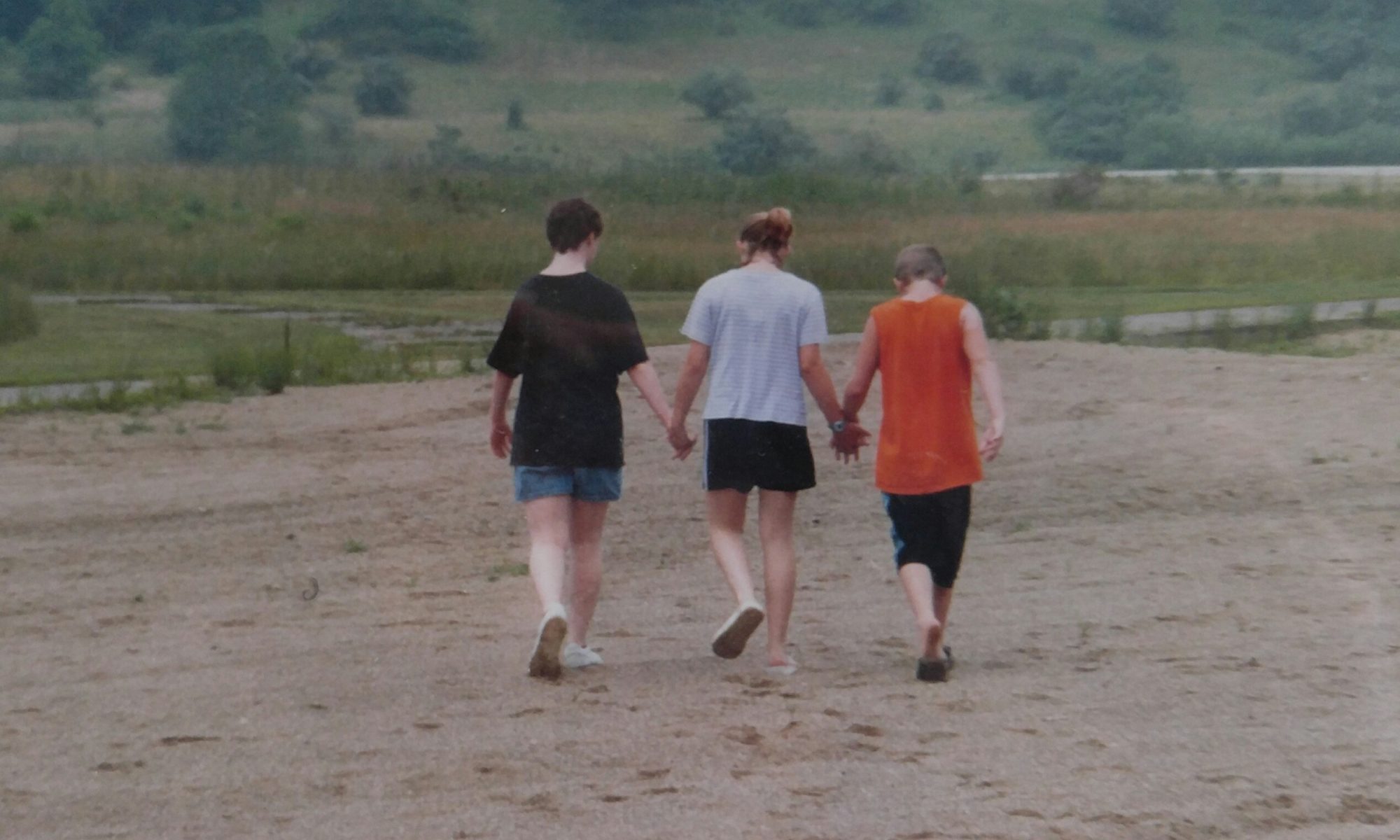Every parent has regrets. Some big ones and some small ones that no one else may ever think about. As an autism mom, I have many regrets – things I wish I had handled differently – therapies I wish I had tried – not spending enough time with each of the kids. But my biggest regret still haunts me. Not every day, but often enough that it really gets to me some days. I can’t change I how I feel, even as I know I’m too hard on myself at times.
I’ve shared before that Casey was four when she was officially diagnosed. It had taken a year to get to this point, but other people knew something was up even before that. She was my first child and the only little one I had ever really been around, so I had no idea what she should be doing. She was never sick, so she got all of her check-ups at the well child clinic in our town. Maybe if I had taken her to the doctor, instead, she would have gotten help sooner. Or maybe not. Autism wasn’t well-known in the late 80’s – early 90’s.
When we finally saw the neurologist, I already knew she had autism. I had read a book by a mom with a daughter with autism and Casey did many of the same habits. But still, who can know for sure?
So, at this appointment, the doctor asked a few questions and observed Casey. When he said he was pretty sure she had autism, I just nodded. There was nothing else to say. Then he told me of a “wonderful book” about autism that I needed to read and said it would help answer all of my questions.
I bought the book right away and highlighted parts of it as I read. As I read, I was also taking care of newborn Rob and toddler Mandy, plus Casey was in preschool. And I got so depressed. This book told me she would never talk. Never be potty trained. Never be able to love. And on and on about the “nevers.” It didn’t mention sensory issues or so many other things that people on the spectrum may have.
Now, I know that there just weren’t many books about autism written at that time. It wasn’t as wide-spread as it is today. It probably was a great book at some point. I still hate it – because that book didn’t say anything about sensory issues. And I wonder, if I had had a clue what she was going through, could I have been a better mom? Maybe, my biggest regret wouldn’t be getting so frustrated with my sweet child.
I had no idea that her clothes might be causing her pain. I had no idea that sounds were causing her pain. I didn’t know that when I left the room, she thought i was gone forever. I didn’t know her screams were anything more than a tantrum because she wasn’t getting her way – even when I could find no reason for her to be mad.
I didn’t know that she desperately needed her routine so she could keep her sensory issues under control. I didn’t know she couldn’t sleep because she was too hot or too cold. I didn’t know she needed a ton of blankets to feel safe so she could sleep. I didn’t know getting her hair washed hurt her ears. I didn’t know the shower caused her pain. The list goes on and on. It doesn’t matter to me that I understand all of this now. It matters that I didn’t know then – and I couldn’t help her.
Her meltdowns started at school before at home. I’m sure it was because there were more expectations of her there and she couldn’t communicate what was wrong. I could guess at home and try to help her before the screams started. Mandy was also really good at guessing what Casey needed. (Another regret – Mandy had to be a big sister to Casey and Rob way too much.)
When her sensory issues really kicked in, the meltdowns began at home, too. But I didn’t know why she was screaming – only that she would be out of control for hours. I couldn’t comfort her. Most of the time, she had no idea I was even there as she screamed. She didn’t want my hugs. She didn’t want me to talk to her. She simply screamed. I made it worse by trying to help her.
And now my biggest regret. I got mad at her. Sometimes, I yelled. Sometimes, I slammed doors and cried. I don’t regret crying. I regret that I got mad at my sweet little child who needed my help – and I didn’t know it. I regret that I didn’t know enough to help her. I regret praying that Rob wouldn’t be like her. It’s a terrible thing for a mom to think. I should have been more patient. I should have been more understanding. I should have just sat quietly and waited for her to calm down, come over and lean on me.
I didn’t and I can’t change that. Could have. Should have. Would have. The definitions of regrets. I try not to dwell on it. I look at how much she has grown and changed. I want to find the author of that book and tell him he’s an idiot. But maybe he didn’t know any better, either.
By the way, I still have that book. It’s still the scariest book I’ve ever read. But, every time I see it, I know how far we have come and know that no one can EVER know what the future holds. It reminds me to always have faith and hope. Please, if you remember nothing else you read here today, please remember that. Never, ever give up on your child. The future is ours.










